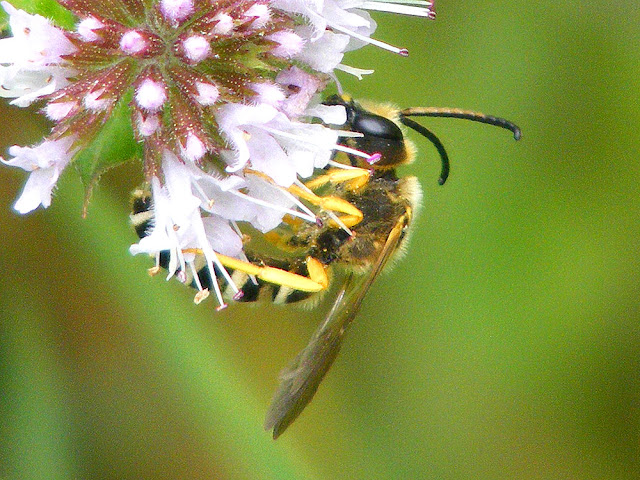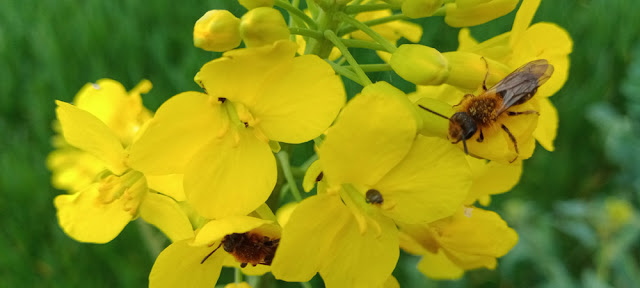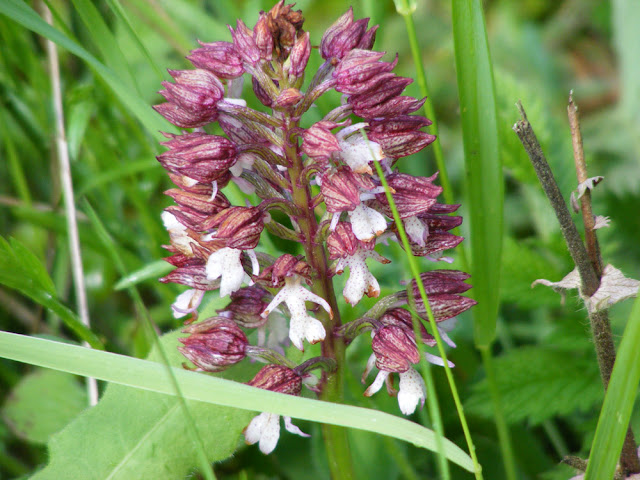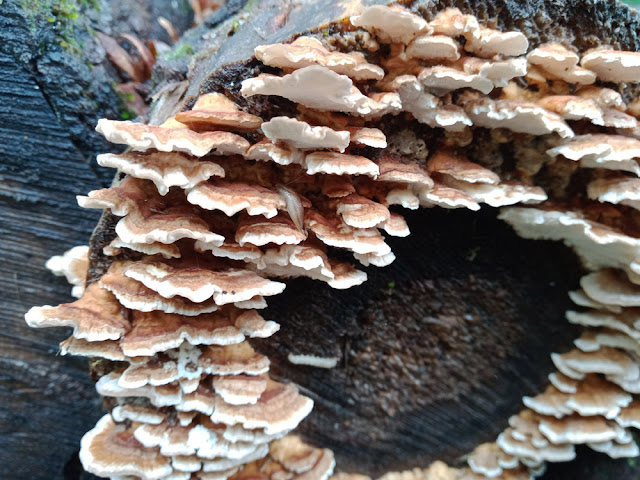iNaturalist, where I upload my biodiversity records, provides a handy end of year analysis of where one has been and what one saw, so here is the summary...
Roughly half my records have been verified by other naturalists, which means that they are 'Research Grade'. The other half are waiting for some competant person to see them and verify or suggest a better identification. It can take a couple of years for some of the trickier species, but the easy ones are usually verified within hours, and by half a dozen people.
The biggest group I entered was plants (42%) mostly orchids, followed by fungi (34%) mostly boletes. Insects made up 18% of my observations, mostly bees. The rest were a few molluscs, amphibians, reptiles, birds and mammals. My busiest months were October, followed by May and April, so quite similar to the year before.
The records that caused the most interest and discussion amongst other iNaturalist users were:
I photographed this male Great Banded Furrow Bee Halictus scabiosae (Fr. ) on the Loire sands near Noizay in September. Normally they would feed exclusively on field scabious, but it was very dry and their preferred flowers were in short supply, so here it was, feeding on water mint.
I photographed these Two-celled Mining Bees Andrena lagopus in passing in March, never imagining they could be identified to species level from this photo. But they have a unique wing venation pattern which meant that Polish bee expert Justyna Kierat identified them immediately. The wing venation and this species preference for feeding on canola meant that she could be certain about her identification.
Wild orchids naturally hybridising always cause a bit of discussion and this one is a Lady-Monkey Orchid hybrid Orchis x angusticruris, photographed in May on the Eperon de Murat, perhaps the most important nature reserve in Indre et Loire.
This bracket fungus, photographed in the Forest of Preuilly in November, caused discussion, because no one can figure out exactly what it is.






No comments:
Post a Comment